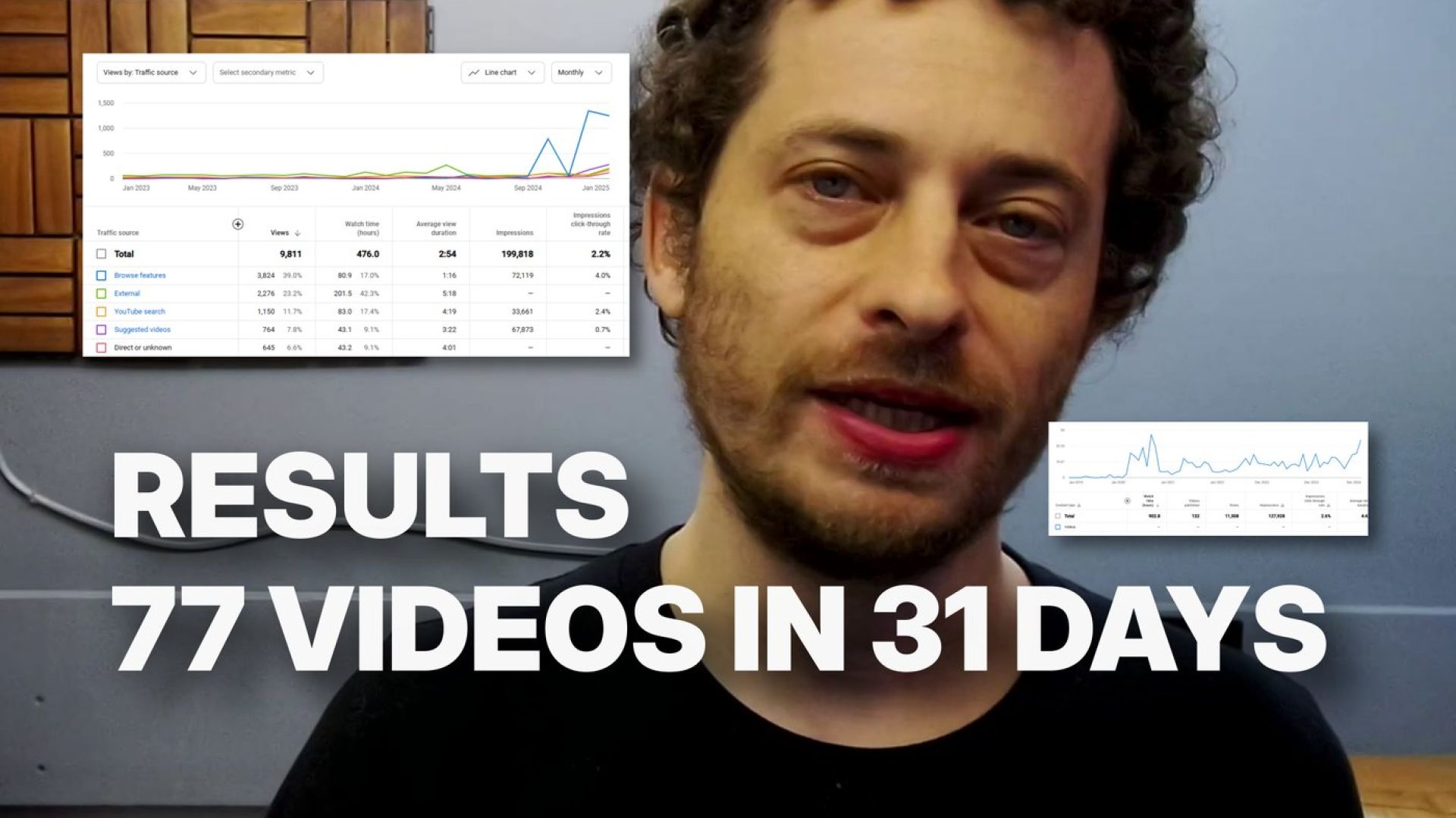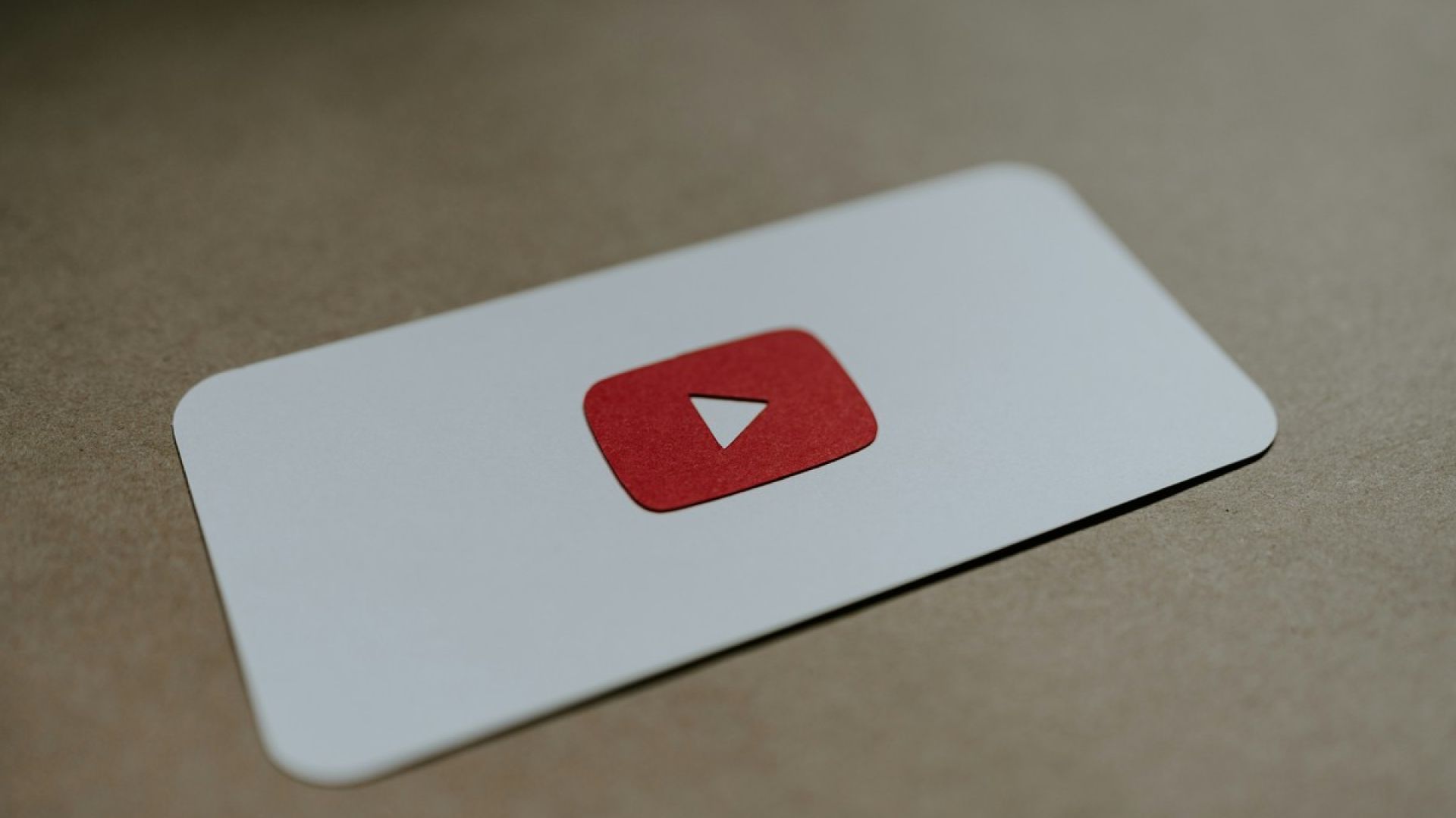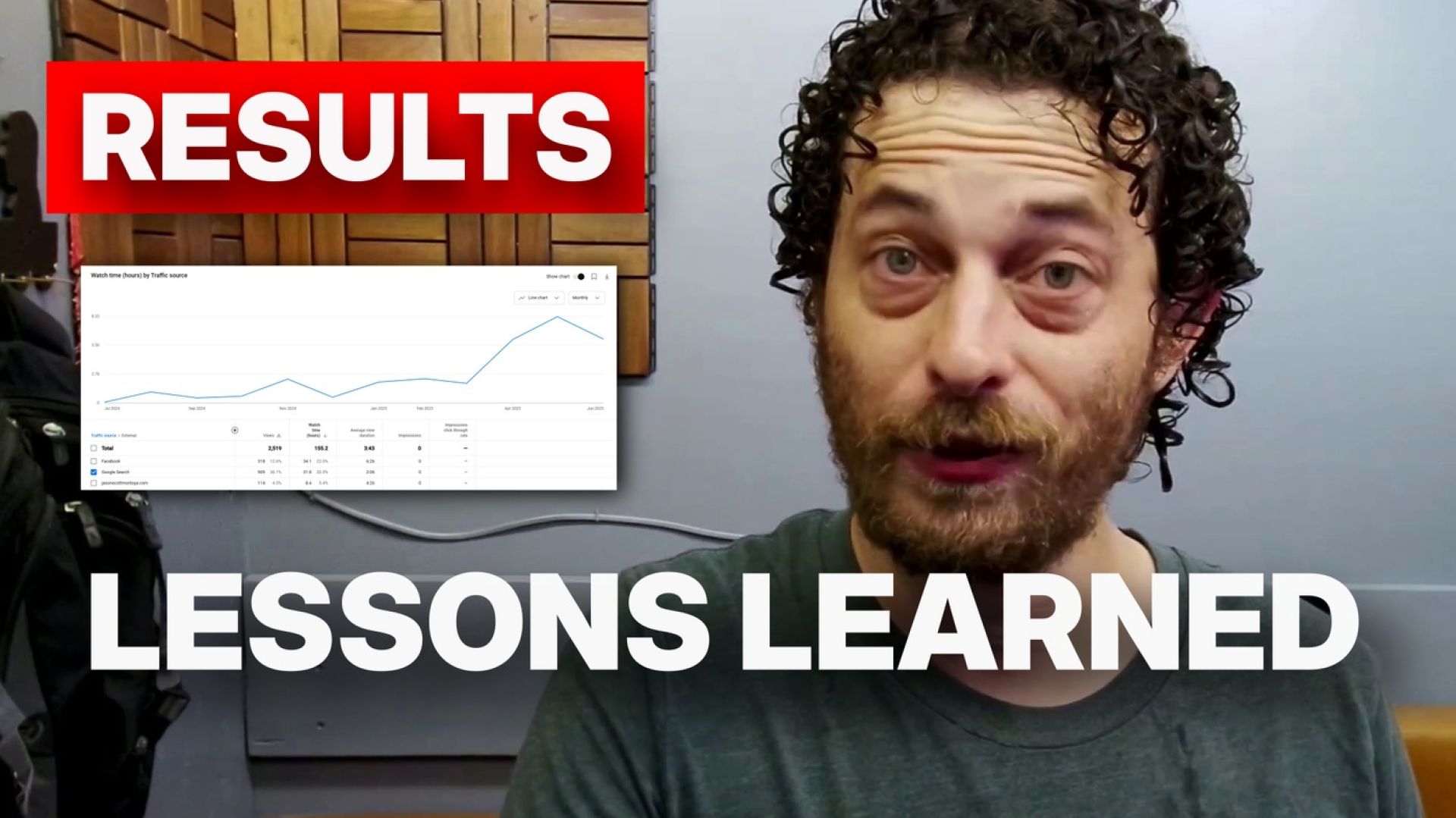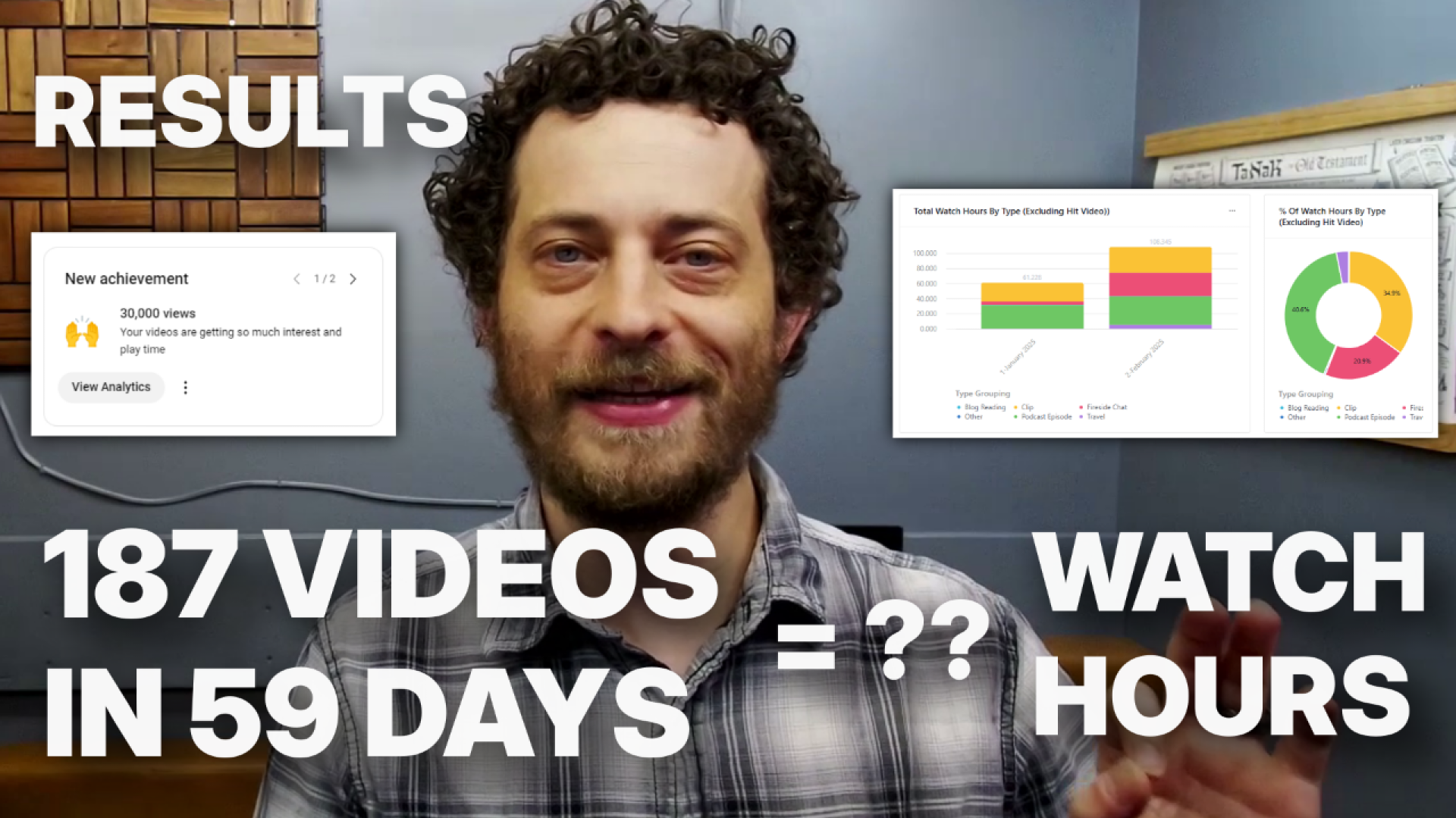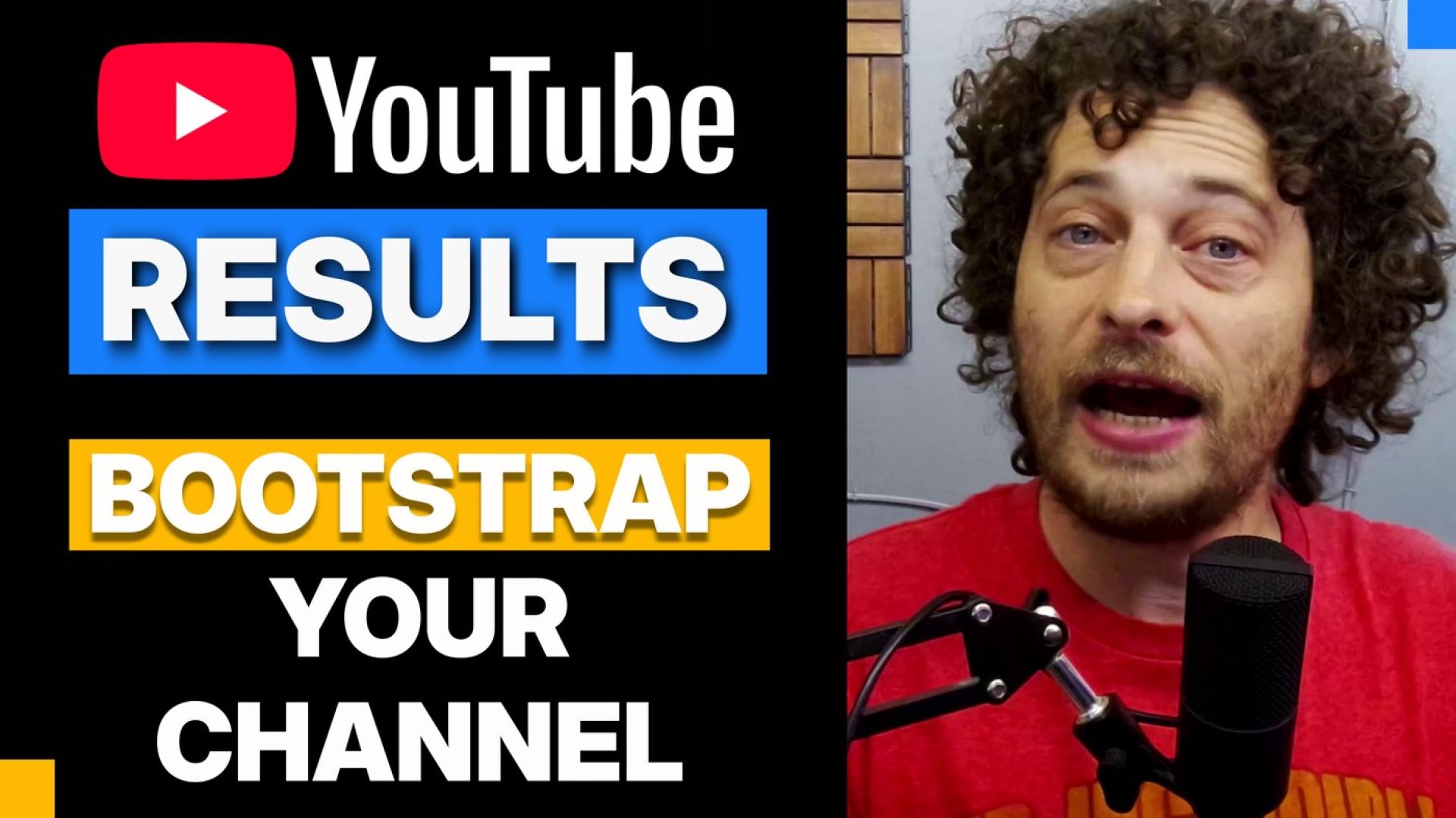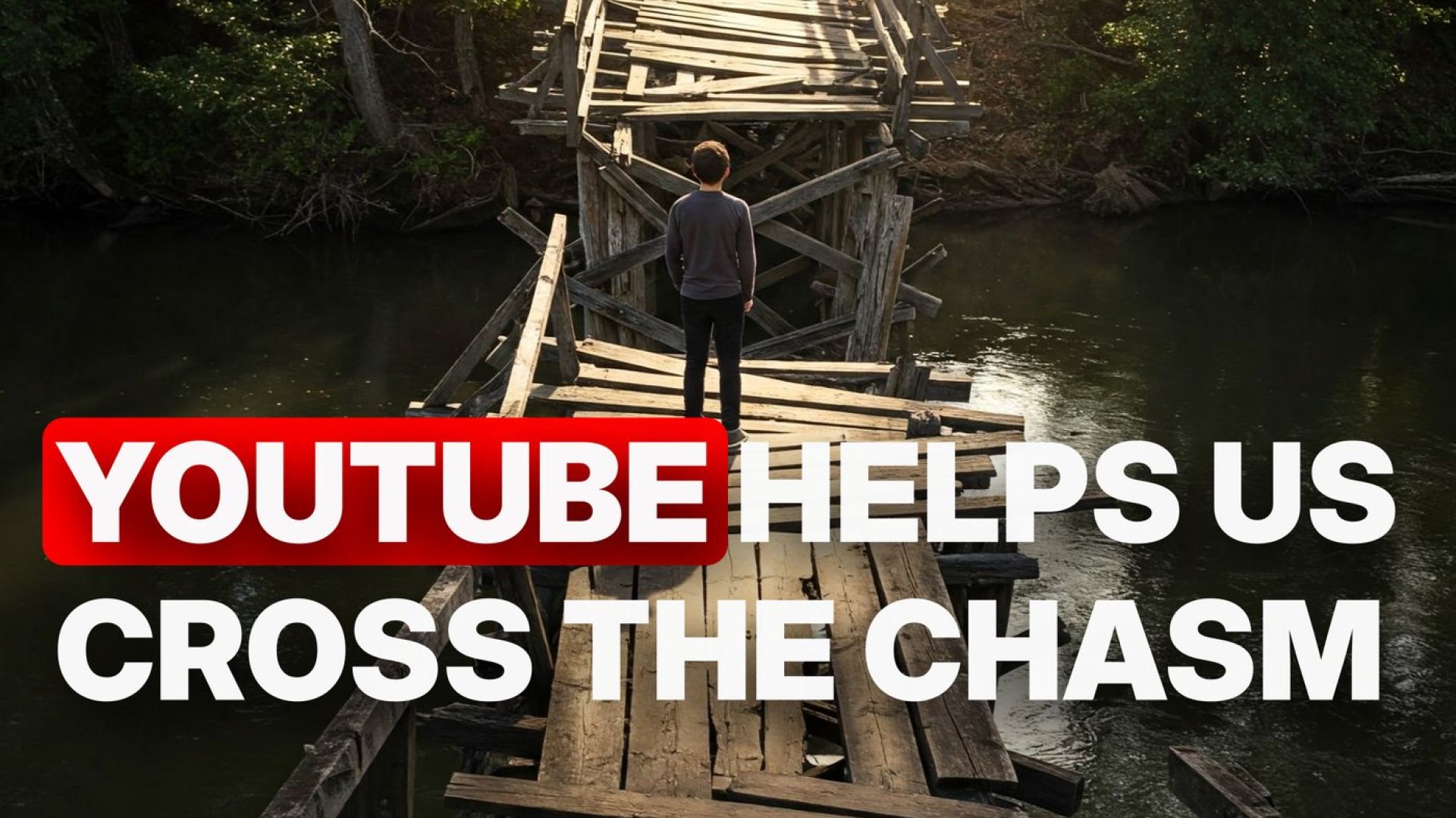
I Posted 270 VIDEOS IN 5 Months. Here's What Happened
After each month has ended, as I've gone down the road to get monetized on YouTube, I've completed a report video where I share my analytics and the progress gained along the way. This video is my report for the month of May 2025.

Below is a slightly edited transcript of the video if you'd prefer to skim it instead of watching the video.
I published 270 videos this year and went from 68 to 302 subscribers in only five months. This video will update you on my journey toward YouTube monetization, diving into my analytics and new lessons learned. I've organized this video as follows: my YouTube story, subscriber growth, the number of videos published, milestones, a watch hour breakdown, top-performing videos, a quick update on my YouTube Shorts experiment, and lessons and insights I've learned throughout May on my YouTube journey toward monetization. Then, we'll discuss what's next for June and beyond, and how my YouTube pivot will apply as I move forward. Use the chapters below to skip to the section that would best help you grow your YouTube channel. I've been doing these YouTube analytics reflection videos every month, so if you want to review past videos, check out my playlist linked below. Before we dive into the analytics, let me give you a quick update about my YouTube story. I started YouTube in 2017, casually adding episodes from my podcast until 2024, when I began testing clips and reels. One podcast clip even went mini-viral with 1,500 views. I've been a content creator since 2014, blogging since that same year, and podcasting since 2020. I wanted to figure out a way to monetize these things I loved, and YouTube seemed like the way to do that. When I discovered how much YouTube promotes videos, I recognized the YouTube opportunity. I started learning everything I could and updating my office. You can check out that video where I painted and updated my lighting to easily allow for video production. With 68 subscribers on January 1, 2025, I began producing dedicated videos for YouTube in addition to my podcast, and it's been a wild and insightful journey. This is my journey toward YouTube monetization. Let's see what happened this last month. To start, let's talk about how many videos I published. I published 270 videos in 2025. A large chunk of these are clips from my podcast channel. If you go back to some of my earlier videos, you can see how clips performed when I heavily used them in January and February, and how much they helped my channel. I've actually pivoted away from clips in many ways. I still do some of them, but I'm much more strategic with those clips. In May, I published 23 videos. For last month, I did two clips, five podcast episodes, 11 fireside chats, one comedy video, two product reviews, and two lifestyle vlogs. I've found success with two more formats for my video channel: product reviews and lifestyle vlogs. One interesting thing I discovered is that I'm actually making progress by doing fewer videos. I'm getting more watch hours per video now. A lot of this has to do with doing a lot fewer clips because I was doing many clips to try and get one to hit. Sometimes that would work, but I had to do a lot of clips to get there. Looking at the numbers, in January, I had 0.8 watch hours per video, with 77 videos published that first month, totaling about 60 watch hours. In February, I got 2.2 watch hours per video, largely due to my most successful video of all time. This was an analytics review for January that got 2,200 views and remains my most popular video to date. In March, I got 6.6 watch hours per video. I dipped a bit in April with four watch hours per video, but in May, I had a couple of hits, particularly at the end of the month, that carried me over. Now I'm at 7.7 watch hours per video, which is the highest I've been, so I'm very happy about that progress. This means even though I'm doing fewer videos, I'm getting more watch hours, and it's having an impact. Of all the videos I've published across all time in 2025, 54 were fireside chat videos like this where I'm talking to the camera, 30 were podcast episodes, 154 were clips, and 21 were other video formats. Let's talk about the milestones I hit in May of this year. I reached 300 subscribers! I was at 68, and now I'm at 308. I have four and a half times as many subscribers as I had when I started this journey. I've made a lot of progress. It took me seven years to get to 68 subscribers, and here, five months later, I'm at 308 subscribers. Thank you for subscribing if this video or other videos have been helpful or provided value. Please do subscribe, like, comment, and share your thoughts below. This isn't just about me telling you what I learned; it's also about me learning from other YouTubers to help grow and get better at what we're doing. Another milestone: I secured my second sponsor for the year. In my last video, I mentioned I published my first sponsored video of the year on digital nomad life by SafetyWing. Thank you, SafetyWing, for sponsoring that video. SafetyWing had sponsored some of my blogging content on my website, and they agreed to sponsor a video in 2025 for me. I've now landed my next sponsor. We haven't recorded those videos yet, but they are in the pipeline. That's two sponsors this year, which is three sponsors in total that I've had for all time, two of which have been this year. So, I've already doubled what I had last year. I'm happy about that progress. The way to compare ourselves is not against other YouTubers; it's against ourselves, specifically our past selves. If I look at where I've been and I'm making progress, I'm excited about getting this third sponsor, or the second for 2025. Another big milestone is that I began pivoting my YouTube strategies. If you've watched some of the earlier videos, you know I published a lot of clips and a lot of videos, and I've actually pulled back quite a bit, becoming more strategic and focused. One of the big pivots I'm doing now is that I'm going to focus on videos that I think are hits, videos that are easy to make, record, and edit, and most importantly, videos that are going to help me earn income as I work toward YouTube monetization. Getting monetized as a YouTuber is probably going to take me a year or longer. I thought it could be quicker, but based on the progress I've made, I'm about a quarter of the way there, and moving quicker on the subscriber front than I am the watch hours. It's probably going to take the rest of the year to get there, maybe longer, and I don't want to work for free. So, I'm pivoting my strategy to create videos that actually generate income. Some of those videos will involve freelancing, because I have a book called Path of the Freelancer. They'll also be videos for small business owners, because I have a book for small business owners called The Jump from Chaos to Clarity for Your Striving Small Business. I also have some other things in the pipeline. I'm going to be focusing on content that promotes my products. I'm also an affiliate of some software tools that I use and love, so I'm going to be doing videos for those. I'm going to be more strategic with my content that either helps me make money, is easy to produce, or is a guaranteed hit. This video always seems to do well, so I'm going to keep doing them. I got traction on two more new formats for YouTube. One is product reviews. I got a new iPhone, the iPhone 16 Pro, and I did a nine-minute video recording my journey. That video has taken off. That was an unexpected hit. I've not done anything about iPhones or any kind of technology reviews like this, and yet the video was a hit. The idea about training the algorithm by creating videos and teaching the algorithm what kind of videos you make is a bit of a myth, and I'm here to bust it. We'll dive more into that a little bit later. I also produced and published two lifestyle vlogs about my wife's dream project. I won't give it away; you can check out the link in the description below. But we did something really big, bought something really big, and are building something really big, so I'm documenting her journey through that process. It's really a documentary series, much like you might see on a home improvement channel. We have two episodes out, recorded a bunch of episode three already, and will be releasing those episodes. It's a very different type of episode than the other stuff I've been doing, but I've been incorporating things I've been learning in my YouTube journey, and also my history in moviemaking and video production in the past, and bringing it back to the fold. It's a higher level of production, a lot more cuts, a lot more edits, a lot more involved, but it's a lot of fun, and those two videos have also gotten some traction. My watch hour distribution across formats is widening. I'm approaching YouTube from an algorithm standpoint, as opposed to a niche standpoint where I focus on one specific thing and do that. I'm actually trying to build more of a complete type of YouTube channel that has a variety of different types of content. I produce content for personal development, for business development, and for leadership and community development, and then also to inspire others to move forward on their adventures, to stop waiting for rescue, take responsibility for their lives, self-author, and move forward. Those are some of the milestones that I've had this last month. Let's talk about subscribers. When I started YouTube in January, I had 68 subscribers. This took me seven years to get, although I wasn't intentional about getting subscribers, so those came organically, mostly from my podcast episodes. As of recording this video, I have 308 subscribers, and 59 of them came from last month. From a subscriber standpoint, May was my second most successful month for getting subscribers. Part of this had to do with the watch hours I got. I also did a lot of YouTube Shorts, and that does help with getting more subscribers, so that helped me get second place for the best month. February is my number one month, and then March is number three. I've been able to increase my subscribers in five months by 4.5 times. 1,000 subscribers is one of the requirements for monetization. That feels closer than ever before, so I'm excited. I'm getting closer; it's still a long way to go, but I'm moving forward, and the watch hours are coming along a little bit slower, but they're still coming along as well. I'm about a quarter of the way there toward the 4,000. 2024 is giving me a little bit of time, but most of it's coming from 2025, and that'll continue as the year plays out as those 365 days roll over. Let's look at my watch hour time for 2025. I have 788.6 watch hours. Like I said, I'm at 900 and something for my eligible watch hours. 788.6 of my almost 1,000 watch hours in the last 365 days are from this year. So, I have really squashed my numbers from 2024. In 2024, I was averaging 10 to 20 watch hours a month, so as you can see, I'm getting way more than that. For May, I had 176.56 watch hours. In April, I was at 129.37, so I far surpassed April, which I wasn't quite sure I was going to do because as May was unfolding, I was getting around 100 watch hours. Then I had two hits at the end, and they each had 30 or 40 watch hours, and that pushed me way over the 100 mark toward 176. March I was at 183.92, and then in February, that's my highest month ever, 237.31. January was 61.58, which was double my best month in 2024, so even that was a lot of watch hours. I had a lot of clips that helped, and I had a lot of clips in February that also helped, and also my hit video, so a lot of factors came together. I'm making progress. I had my peak in February, and I am steadily moving forward, and May has bumped up from April. We'll see what happens for June. Can I keep it up, or will I fall flat on my face? Let's dive into some of the details. On the left is a pie chart which shows you the percentage of watch hours and total. The fireside chat video is number one, and then the podcast episode is 33%, so those are a majority of the total time. But if we break it by the average per video, that's the pie chart on the right. We can see that it changes a little bit. So, I've actually got more of a distributed pie here instead of these dominant formats. Other formats are starting to come into their own. That means I have a more diversified channel, which I think is a good thing. Let's go into the specifics. Product reviews yielded 40 watch hours, and that's my top performer per video, with 8 watch hours per video. My lifestyle vlog garnered 12.275 watch hours across two videos, averaging 6.1375 watch hours per video, making it my second-highest performing format. Fireside chat videos, like this one, accumulated 340 watch hours for 2025, averaging about 6 watch hours per video, so that one's still doing well. Podcast episodes accounted for 293 watch hours, but with a significant drop to about 3 watch hours per episode, which is about half of what these fireside chat videos achieved. I did a comedy video which generated 9.2 watch hours, averaging about 3 watch hours per video. Travel videos accounted for about 5.5 watch hours, averaging 1.377 watch hours per video. Finally, as I've mentioned, clips contributed 84 watch hours, averaging about half a watch hour per clip. Clips that are 5 to 10 minutes or longer are really the way to go; don't bother with shorter clips. Let's talk about old watch hours. I want to be able to get to the point where I have enough traction or momentum or a YouTube video library that old videos continue to get watch hours, because I don't want to be on a hamster wheel of watch hours, and that's what it feels like. I was able to get a little bit more; I got a little over 11 watch hours from old videos. The way I define old videos is if they are over four months old. So, new is the last month, and then recent is the three months before that, and then old is anything before that. I was consistent at 10 hours, although in February I dipped to five, but then I got back up to around 10. I do have a hypothesis that if you get videos that are showing up on Youtube keywords, that's the way to get watch hours on old videos. I don't know for sure that that's the case, but from some of the videos that I've done recently, and the ones that continue to seem to get traction, that seems to be what's giving it to them, is the Youtube watch hours. So, I'm going to be keeping my eye on that, because if that's the case, I might actually shift and pivot again toward content that's most likely to be searched. If I can build this baseline of watch hours on old content, then it'll just be a lot easier to get toward the 4,000 watch hours, because when I do the other videos on top of that, it'll be an easier hill to climb because the hill won't be starting over every single month. That's what's been happening. Let's talk about top-performing videos for the last month. In May, I had three level two hits (15 to 50 hours) and five level one hits (5 to 15 watch hours). I had eight hits in May, which is awesome! What are my six most popular videos? One of the little games I like to play to keep myself motivated is looking at my top 12. I go to my YouTube page, look at my videos, and sort them by the most popular. As you can see, eight of my top 12 are from 2025. I call this dethroning the top 12. My goal by the end of this year is to have them all be 2025 videos, and none of the older ones are in there. For that to be true, I have to have them all beat that second video, because that's an older video. I've got to have 11 videos to get over 2,000 views by the end of this year. That's my goal. I don't know if I can do it. I've got eight in there. Getting this second row will be a bit easier than that top row, but if I can push them all out, then I'm going to be happy. If we look at just last month, three of these are from May. That's a fun little game: go to your top 12 and every month see what progress you've made and if you've moved any down. A lot of YouTubers that have been around a while, their videos that are in the top 12 have been there for years and years; they don't have anything new in there. So, it does get harder when you have bigger and bigger videos. For new YouTubers, small YouTubers, we can play the game and continue to see those videos get knocked out. Let's talk about my YouTube Shorts experiment. Getting my first sponsored video this year helped motivate me to get the YouTube Shorts experiment going. My goal was: can I figure out a way to use YouTube Shorts to get more watch hours on the wide-format videos? The answer is no, but you can get subscribers. I want to try two more things to use YouTube Shorts to get watch hours on wide-format videos. The first idea is what I'm calling the "chain gang of Shorts," where I create YouTube Shorts — just clips from a podcast episode — and I link one Short to the other Short, and I link that Short to the next Short, and then the last Short links to the full wide-format video. The idea is that people who watch Shorts are more likely to watch more Shorts. So if they watch one Short, they're not going to the long-form video just then, but if I can get them to watch six, seven, eight clips from that podcast, and then go to the wide-format video, will they be more likely to stick around? I don't know; that's Experiment One. Experiment Two is where I do videos specifically for YouTube Shorts, and I'm making an appeal, giving a hook as to why they should watch the full wide-format video. If neither of those works, then I'll be giving up on YouTube Shorts. If you want more details, check out my YouTube Shorts video where I dive into the experiment. Let's talk about lessons learned. One of the things that I found motivating is playing "King of the Hill" with myself; that's the top 12 game that I went over with you. It can be demotivating to YouTube all this time and you have this video that doesn't do anything, getting one view, five views, 10 views. But then you get one that hits, and it's fun to have videos where you're competing with yourself. I think it's fun. This video isn't competing, but my next one is. Is it going to beat the last one? Are any of them going to beat the top 12? So this idea of competing with yourself like it's a game instead of getting disappointed by a video, think about, "Okay, how can I beat that video with the next one?" As I'm doing more and more videos, I'm learning which formats are consistently going to work. This one is an example. The other one I mentioned earlier was "How YouTube Changed My Life." I did that at 250 subscribers and also at 150 subscribers. Both of those have done well, and so I'm going to do another one when I hit 500, and I'll do another one at 1,000. I'm identifying formats that I can just do over and over, and that will continue to have success. This is one of them, so I'm going to continue to do these every month. There are certain formats that continue to perform; those become a staple that I can incorporate into my channel, and those will be the ones that are more reliably going to get results. I do them a certain way instead of getting too weird and different for each one. Keep them within that format, and do those in a reliable, steady way. Then use other videos to try new things and experiment and get out of the box. Another interesting opportunity is trend videos. I mentioned the animated video clip, the comedy video I did about using the Riverside animate function where I animated myself as a Pixar character, as a Studio Ghibli character, as a claymation Jason. That was a feature of Riverside that was released. I'm a paid user; that's what I use for my podcast episodes. I'm also an affiliate, so if you want to check it out, I have a link in the description. They had this new function, and I jumped on it immediately. Even before the company announced it, I had produced a video, published it, and put it on YouTube. I got attention from Riverside. I published a blog post on my website with the video, and it got searched indexed on Google, so I was getting Google traffic. Trend videos can be super powerful ways to grow your channel. I don't want to chase trends right now because as soon as you stop chasing them, then your channel would die. So, I want evergreen content. I want content that's going to stick around, that's going to continue to get views. Once I have a foundation, once I have monetization in place, then I'll play with trends more because right now if I hit a trend and get a super successful video, I'm not monetized, so it doesn't help me in any way other than getting toward the watch hours. So, I suppose it could help me get there quicker, but it's a lot of work. You have to go fast, and you might or might not hit it. Number four: Having people to help you promote a video is super powerful. Doing podcast interviews is great for this because the other person is invested in promoting the video. Not all of them, but a lot of them. Even if they aren't, I can tag them on social channels, and that'll help get more visibility. The more that the other person, the guest that I'm interviewing, can help promote it, or if it's the type of video that has a really solid message or provides a lot of value, or is really novel in some interesting way where people are also sharing it, that's super helpful. The algorithm plays a part, but if you can also get an army of people to help promote it, that's another way to get a lot of watch hours. Some of my videos I've been able to get that. Some tried and true formats don't work; they fail. I did a video about how you should start a YouTube video even if nobody watches, and I saw a ton of people do these, and almost every single one I saw had all these views, and mine has got like 10. Just because it's a viral format doesn't mean it's always going to work. Out of all the social media channels, I'm trying to figure out how to leverage social channels to get YouTube watch hours, and I have not been able to figure out a solid way to do it. Facebook is probably the best source, and then LinkedIn, but LinkedIn is not very good; it's just second. Number seven: Talking about binge-watching. I haven't leaned heavily into binge-watching, where you do a video and the video transitions to another video where you point people to that video, and you do it as organically and as compellingly as possible. But by doing these lifestyle videos about this project, my wife's dream project, we have two episodes now, and they're documentary, so you watch episode one and then you watch episode two, and they're going to turn into this binge-watching funnel. So, we're going to have more and more of these episodes, and you'll watch one and go to the next, and if you miss one, you go back. I'm curious to see how that type of binge-watching affects those videos that are part of that, but my channel as a whole. I might lean into that more with my other videos. That's one of the wonderful things about doing different formats and types of videos: you learn different things from different types of videos, which you can then apply to get better and better. Number eight: Sometimes you record a ton of footage. I did this for my iPhone 16 video. I recorded probably like 40 minutes worth of footage, and the whole, the final video is like eight minutes long. You might record a ton of footage, and then you watch it and you realize like nobody cares about this, nobody's going to watch that. So you end up cutting out a lot. This is also true with the lifestyle vlogs with our big documentary project. I'm working on episode three right now. I had an hour and a half of footage, and I'm going to probably cut it down to 30 minutes or maybe less, and I might have some more footage that I add to it, but I'm just cutting out a ton with that project. I kind of expected that, but with the iPhone one, I thought, "I'm recording all this stuff that's good and wonderful," and it ended up not being that. I ended up cutting a ton out to make it more concise, more focused, and valuable, and getting rid of everything else. That's one of my advantages, my superpowers, is cutting things down, trying to get it as concise and brief as possible. This video I'm probably going to record for an hour, and then I'll cut it down to 30 minutes. Number nine: I want to talk about the iPhone video because I have never posted anything about iPhones. I've not done any product reviews about electronics, computers, laptops, nothing. I've talked about personal development, business development, leadership, and politics, but nothing about iPhones, nothing about electronics. And I published that video, and it was a hit. It did better than almost all of my videos. I think it's like the fourth most popular video on my channel right now. People say you have to train the algorithm, you have to train the algorithm, and I'm here to say you don't have to train the algorithm. What YouTube at the basic level is, is someone wants to watch a video, and YouTube is trying to show them the video they want to watch. That's what it comes down to. So if you produce that video, if you publish the next video that they want to watch, YouTube wants to show it to them, whether you published any videos like that before. YouTube is going to look at that video and go, "This person wants to watch that video." And it's not going to look at all the other things that you have or haven't done. It's going to look at that video. I have a hypothesis that the number of subscribers that you have gives your channel some type of authority score so that the algorithm gives more weight to the videos that you produce to look at and perhaps to distribute more widely. I think the history has a role in building your audience. I saw a YouTube video from the official YouTube channel, and they said, "Don't ever delete a video because the audience is connected to you through that video, whether they got an impression or they watched it, and how much they watch it." They're connected to you, and so every video builds your audience. So, the larger your audience is, the more your videos are going to be exposed to that audience, and I get the impression that YouTube expands that audience a little bit at a time, and as you grow your channel, you get more of an audience. So, I think that's where history and subscriber count comes in: that it gives you authority and it increases your audience. But the content itself is going to be displayed to your audience as well as some people outside of that audience to show it to people that want to see it so that YouTube and the audience are happy. Now, this is actually one of the things where I think doing a lot of videos in January and February, all those clips, gave me a lot of impressions to a lot of different people, and I did get a lot of views and I did get a lot of watch hours, and I think that helped build my audience. So now that I'm doing fewer videos, I have a larger audience to tap into. That's just a hypothesis; I don't know for sure that that's true, but the thing that I really want to emphasize is that I did this video that I had not trained the algorithm to do, and it was a hit. Don't let "I'm training the algorithm" be some handicap or some kind of crutch that makes you think you're not on your way. Publishing videos is going to help you grow your audience and get more subscribers, and that's going to help you grow your channel. But if your videos aren't getting views, it may not be because you haven't trained the algorithm. It may be that you just haven't done the video, you don't have an idea that has a broad enough audience, or you haven't put a title and a thumbnail that is capturing that audience. I don't think the YouTube algorithm is stupid; I think it's pretty smart. I think it's going to figure out how to deliver the best piece of content to the viewer so that they're satisfied, and if your video is that, whether you've done anything in that space or not, you're going to get an audience for it if it's a good enough video. Check out my video where I talk about the algorithm over having a niche. People are going to see videos because the algorithm shows them, not because they're following your subscription feed. Most people don't follow their subscription feed; they follow their homepage feed of recommendations, and YouTube is going to show them the videos that it thinks they want to watch, that they're going to be satisfied from watching. I'm trusting the algorithm is going to show them the videos they want to see, and it's going to hide the videos they don't want to see, and that means I can make as many different types of videos as possible, and people won't even know it because the people that will want it will see it, and people that won't, won't. If you want to keep diving into the lessons learned toward monetization, I've got a watch list of all the videos I've done for each month where I dive into the analytics and I share my lessons learned, so you can check out that playlist in the description. So, what's next? I launched into YouTube at the beginning of this year with energy and activity. In five months, I've published 270 videos. I've scaled things down as I pivot strategies. I've got a handful of recorded videos and podcasts in the pipeline that I need to edit. I've also got almost 40 videos I need to transcribe and publish on my website, so I'm a bit backlogged. Over this next month in June, I'll be catching up on these backlog tasks. I'll keep doing new episodes of the podcast, but I'm going to slow it down dramatically from what I was doing. For YouTube, I'm going to focus on videos like this analytics report, which are expected to perform well, easy-to-record videos, and videos that can generate income for me through selling my books, affiliate products, and sponsorships. Once I get caught up on things, I'll have a bundle of recovered time, and I'll focus as much of that time as possible toward revenue-earning activities. If you want to dive deeper into these details, I've got a video where I talk about that pivot for my content creation strategies at a higher level as I'm working toward my goal of earning $100,000 in content creation. I'm probably not going to get there this year, might not get there next year, but within a couple of years, I'd like to be at $100,000 per year in addition to my freelancing income. So that's my goal. I'm Jason Scott Montoya. Thank you for watching, and I'll see you on the next video.YouTube Journey Overview
Video Publishing Strategy
Subscriber Growth and Milestones
Watch Hours Breakdown
Analyzing Top-Performing Videos
YouTube Shorts Experiment Insights
Lessons Learned from YouTube Journey
Future Plans and Goals

